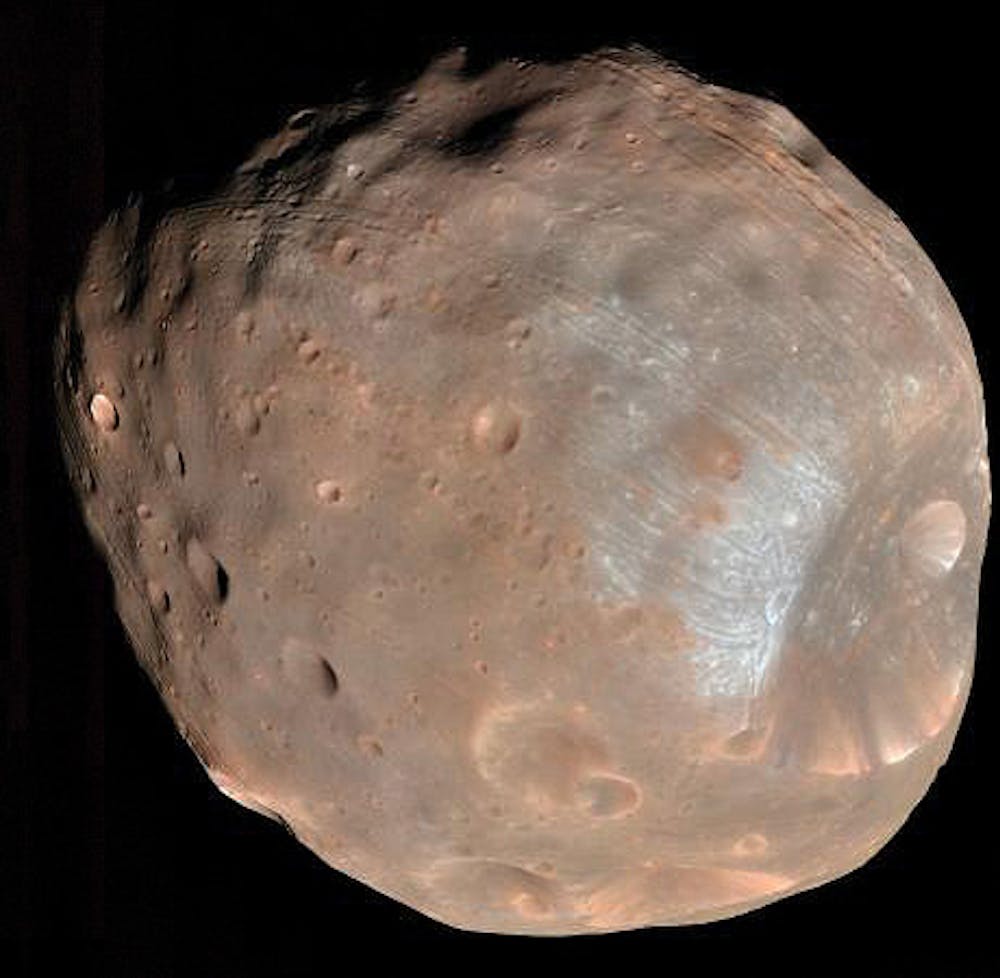With November marking the 13th year of permanent human residence at the International Space Station, NASA is beginning to look for new opportunities for space exploration. Its new Solar System Exploration Research Virtual Institute will team up with 19 researchers from Brown to develop a scientific plan for human and robotic space exploration of the moon, near-Earth asteroids and Mars’ moons Phobos and Deimos.
“SSERVI was created to further the goals of science and exploration by addressing fundamental and applied science questions and human spaceflight concerns,” wrote Brad Bailey, staff scientist for NASA and SSERVI, and Gregory Schmidt, SSERVI deputy director and director of international partnerships, in an email to The Herald.
Targets of exploration
“The end game of the project is to understand how the solar system evolved from a nebular to the solar system today,” said Alberto Saal, associate professor of geological sciences and a researcher for SSERVI.
Jim Head, professor of geological sciences and a researcher for SSERVI, said the program aims to answer questions including how humans interact with various environments in space, whether humans can go to Mars, what the origin of water is and whether asteroids pose a threat to Earth.
Saal said the majority of his work focuses on analyzing volcanic rocks that appear on surfaces in outer space. Much of his past work has focused on the moon and the mystery of lunar water. Working with SSERVI will allow Saal to continue this research and analyze materials from other targets of exploration, he said.
While many of NASA’s past space explorations have targeted the moon, research into other planetary bodies could provide new insight.
Asteroids are important to examine because they are the “building blocks of planets,” Head said.
Phobos and Deimos are of interest because of their relation to Mars and their potential to serve as weigh stations before a mission to Mars, Head explained. Mars is “a rosetta stone for understanding the origin of life,” he said.
“The Brown SSERVI Team brings with it a long history of groundbreaking planetary science discoveries,” wrote Bailey and Schmidt. Their research will be important “as we prepare to send humans to the surfaces of the Moon and asteroids and ultimately Mars,” they wrote.
‘A win-win situation’
The 19 Brown researchers will work directly with researchers from the Massachusetts Institute of Technology. The collaboration is “a win-win situation” because of MIT’s strength in science and engineering, Head said.
Dave Scott, a visiting professor at Brown and commander of the Apollo 15 Space Mission, noted the benefits of “Science/Engineering Synergism,” in an email to The Herald. During the Apollo program, scientists and engineers learned “to work together to optimize the results of the mission,” he wrote.
“SSERVI presents an outstanding opportunity to use and expand this concept, for both science and engineering disciplines and for both education and research,” Scott wrote.
Together, science and engineering fields are greater than the sum of their parts, Head said, adding that science needs engineering to “make dreams a reality.”
Head also said the partnership “enhances the experience of students ” at Brown, and that seminars and joint classes result from the partnership.
Understanding the neighborhood
The solar system is like Earth’s neighborhood, and “we need to understand the neighborhood to know what’s going on,” Head said.
Our understanding of the Earth is like “a history book with the first five out of ten chapters missing,” he added. The solar system acts as a tape recorder of what has happened in Earth’s history, offering clues to the past that will inform our understanding of its current trajectory, he said.
Head, who worked on the Apollo Space Mission after completing graduate school, said the Apollo Mission was “audacious to put it mildly.” The samples brought back from the Apollo mission would give astronauts today a better idea of where to go on the moon in search of specific sample locations, Head said.
One goal of SSERVI researchers is to develop a mapping system for the moon similar to Google Maps, Head added.
“The future for human exploration is unbounded,” Scott wrote. “However, it must evolve in a careful step-by-step process where we build on experience, we maximize the use of the ‘resources’ available, and we do not attempt to go too far too fast. We are ready to go back to the Moon. But we are not ready to go to Mars.”
Exploration is a part of America’s national identity, Head said, adding that he thinks the United States is a leader in exploration because it is such a young nation.
Head compared humans’ motivation for space exploration to their desire to travel. You can be shown the best image of the Taj Mahal, but you still want to go there and see it yourself, he said.
Space exploration has important policy benefits, Head added. Success in space exploration presents an opportunity to show international leadership in a peaceful and nonviolent way, he said. “This was important in Apollo, and that spirit of ‘we come here for all human kind’ is really critical. It blurs national boundaries. It’s healthy to look beyond the short-term political morass.”
Pushing boundaries
“This will be challenging, intellectually rewarding … and fun,” Scott wrote of SSERVI.
Saal said he is most excited to get his first samples from near-Earth meteorites next week so that he can begin to research them.
“We definitely want to have undergraduates involved doing research,” Head said.
Moving forward with SSERVI, NASA is most excited to “push forward the boundaries of planetary science and exploration with our ultimate goal of understanding our solar system and using this understanding to enable human exploration beyond our home planet,” Bailey and Schmidt wrote.

ADVERTISEMENT




